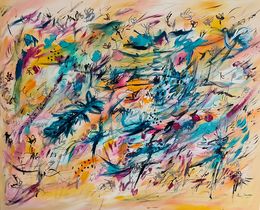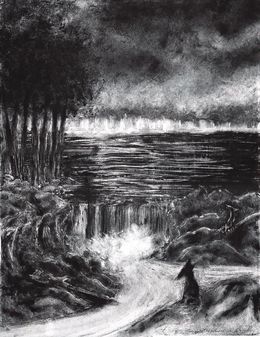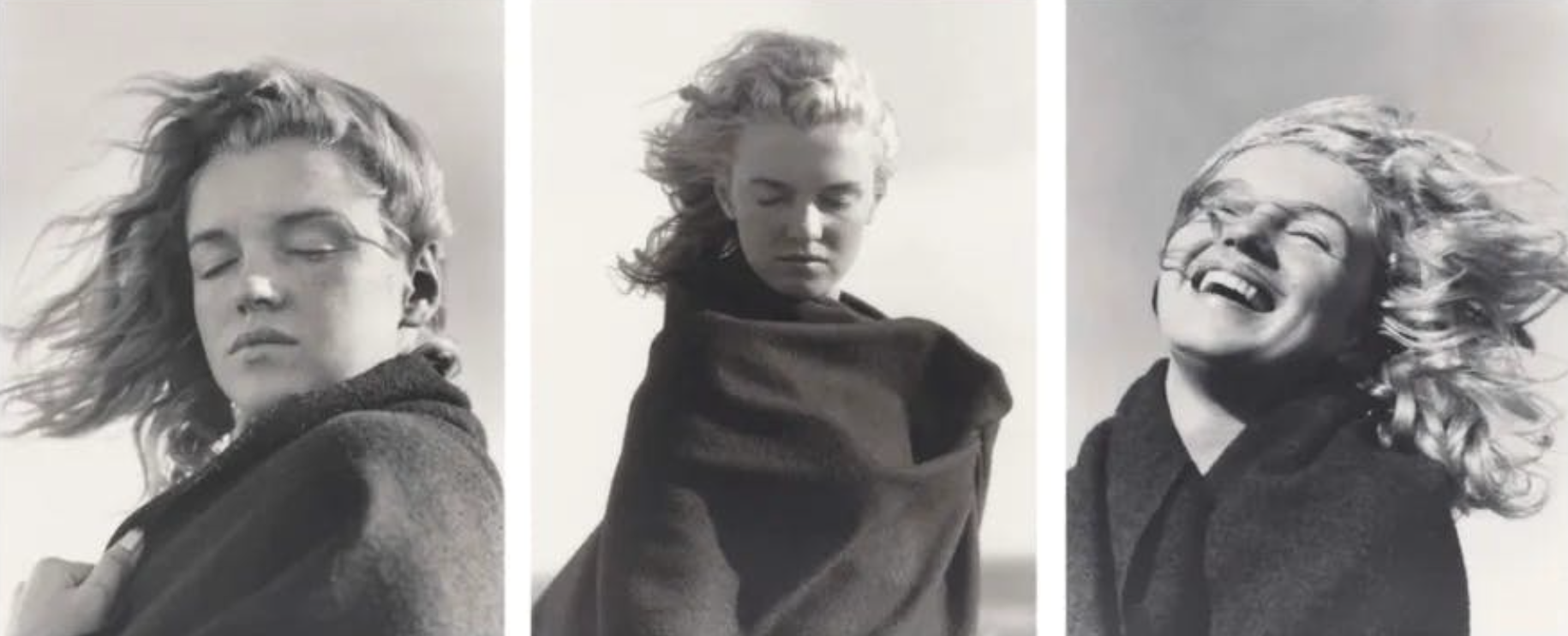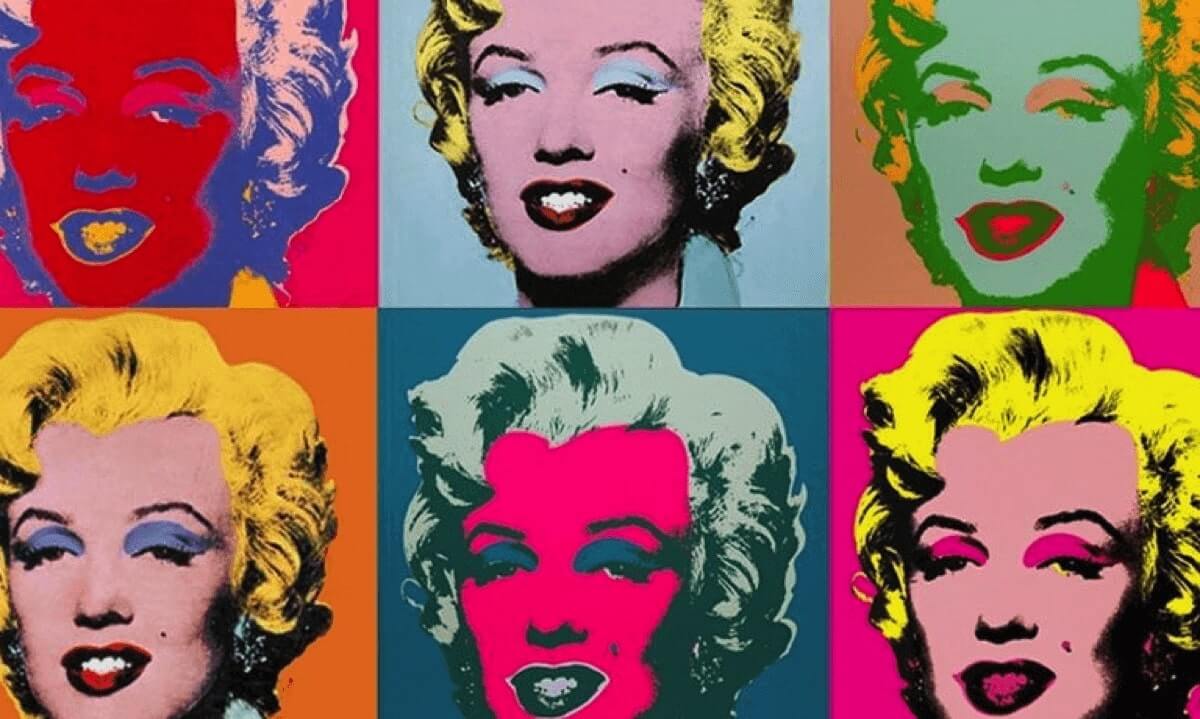
Diptych and Triptych Works That Have Influenced Art
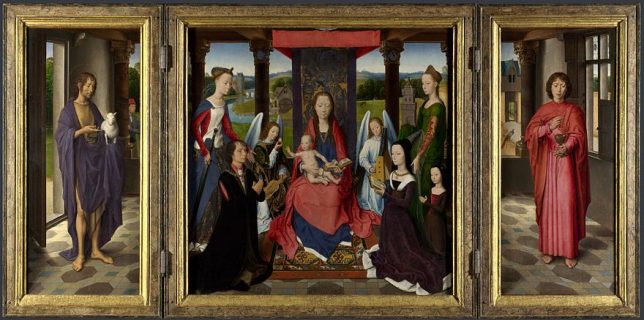
What is a diptych or triptych?
A diptych or triptych, originating from the Greek ptykhos meaning to bend, is an artwork made up of panels (either 2 or 3 respectively). While the panels may form a single scene, they sometimes are standalone pieces that are linked through a visual coherence.
In the Middle Ages, the triptych was used to tell stories. Composed of a large central panel and two smaller ones painted on the inside like folding doors, the 3 panels are a reflection of the three individuals of the Christian Holy Trinity. The panels were fitted with hinges to allow their closure and protect the artwork.
Artists either used the triptych to tell a story across different points in time, to demonstrate the progression of a subject or to show multiple points of view. Painted or sculpted, the triptych for many centuries was the first choice for depicting religious painting.
Nevertheless, the diptych and triptych are found often later in classical and modern art. Artsper invites you to discover a selection of significant diptychs and triptychs throughout the history of art.
#1 The Wilton Diptych, 1395-1399
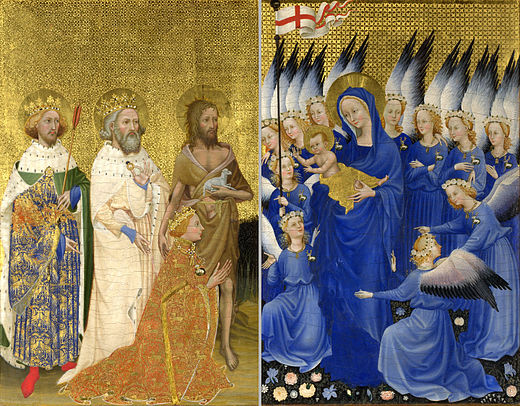
Commissioned by King Richard II, The Wilton Diptych, the artist of which is unknown, is a small diptych made up of 2 hinged panels painted on both sides. In gothic style, it depicts on one side a kneeling Richard II. On the other Virgin Mary and baby Jesus are shown surrounded by 11 angels to whom Richard II either prays or gives a present. When closed, the panel on the right depicts a white deer, a symbol of Richard II. On the left, a shield is depicted, decorated with the coat of arms adopted by Richard II in 1395.
According to one interpretation, in this piece, Richard II puts his kingdom, England, under the protection of Jesus and the Virgin Mary, who bless him in return. This diptych also conveys a political message and highlights the link between the earthly and the spiritual. These days, the work is owned by the National Gallery in London.
#2 Piero della Francesca, Diptych of Federico da Montefeltro and Battista Sforza, 1465-1466

The diptych painting Diptych of Federico da Montefeltro and Battista Sforza by Piero della Francesca depicts the portraits of the Duke of Urbino and his wife Battista Sforza. They faced each other, and stood in front of their land in the distance. Usually, paintings depict the husband on the left, but here it is Battista who is left. Without a doubt, this is an homage to his spouse but possibly also to conceal the disfiguration on the other side of the Duke. The latter was in fact painted during his lifetime, however, the Duchess was already dead, which can explain the pallor of her face. Today, the Uffizi museum in Florence, Italy, is home to this diptych.
#3 Jérôme Bosch, The Garden of Earthly Delights, 1494-1505

The Garden of Earthly Delights is a triptych oil painting, painted on wood by the Dutch Jérôme Bosch. Closed, the triptych depicts a transparent sphere bubbling with life, a symbol of the creation of the world. Inside, the panel on the left represents Adam and Eve, in an earthly paradise, surrounded by imaginary animals. The central panel is an unusual yet delightful garden where Adam and Eve’s children, humanity, indulge in the pleasures of the flesh, lust, and sin in a supernatural setting of giant birds and fruits. Finally, the right panel shows the torments of hell. This work appears as a warning against vice and disrespect for the principles of religion. It is currently on display at the Prado Museum in Madrid.
#4 Paul Gauguin, The Sculptor Aubé and His Son, Emile, 1882
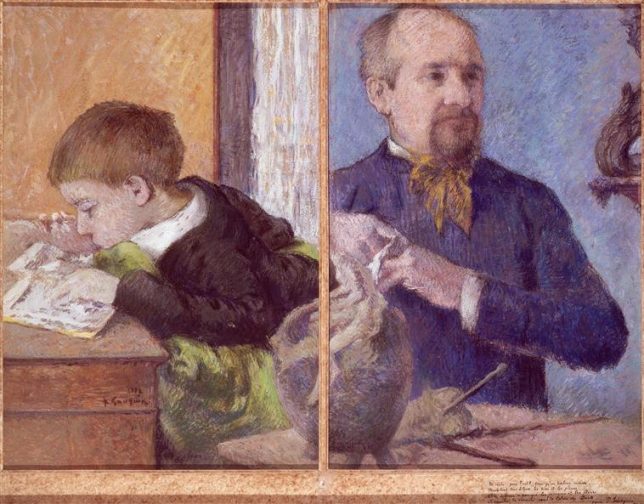
Although better known for his early canvas work retracing his life in Polynesia, Paul Gauguin is also the creator of the diptych painting The Sculptor Aubé and his son, Emile. Contrary to his usual work, this diptych’s colors are not vibrant and the subjects are not exotic. On the right, Jean-Paul is in the process of making a vase in his workshop. Instead of what he is doing, he looks in the opposite direction at his son, who is looking at pictures, in an image with a totally different atmosphere. The father and son are placed in opposition and appear not to be in close proximity to one another. Yet the two canvases flow into each other. The vase and the corner of the table on which the sculptor is working even appear in the scene depicting his son. Here, Gauguin separates himself from Impressionism and from the obsession with imitation.
#5 Andy Warhol, Marilyn Diptych, 1962
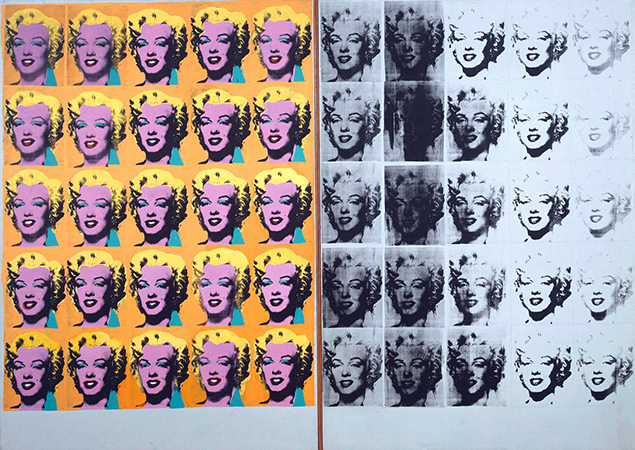
In the 4 months following Marilyn Monroe’s death in August 1962, Andy Warhol made more than twenty silkscreens of her. They were all based on the same publicity photograph. The famous Marilyn Diptych features two silkscreens of Marilyn, one in pink, the other in black and white. By repeating the image, he evokes her omnipresence in the media. The contrast of the bright colors with the black and white, and the effect of the fading in the right panel suggest the star’s mortality. This work now belongs to the Tate of London.
#6 Mark Rothko, Chapel Rothko, 1964
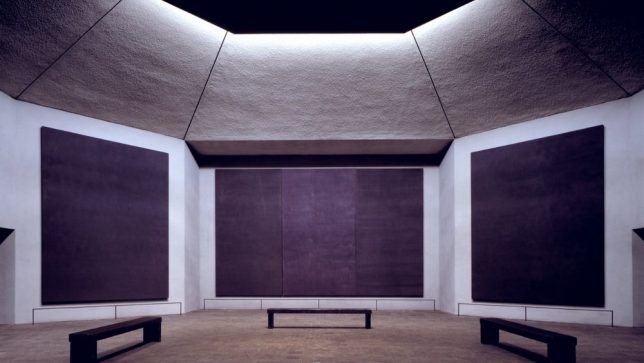
In 1964, the art collector couple John and Dominique de Ménil asked Mark Rothko to erect a dedicated space for meditation. Although named the Rothko Chapel, it is in fact an octagonal building open to all faiths. There is no saint’s name or cross, only a huge room of modern art decorated with 5 simple panels and three diptychs, the works of Rothko. These are intended to evoke the biblical 14 stations of the Way of the Cross. However, Mark Rothko died a year before the inauguration of the chapel.
#7 Francis Bacon, Three Studies of Lucien Freud, 1969

In the 20th century, Francis Bacon was considered the ultimate triptych painter. One such triptych was a painting done in 1969 of his friend and arch-rival, 3 Studies of Lucien Freud. In the mid-70s, the 3 panels were sold separately. Disappointed that the panels had been split up, Bacon wrote on a photograph of the left panel that it “only made sense if it was with the other 2 panels”. The panels passed between different collectors until the late 80s when one of the original buyers reunited them. The work sold for 142.4 million dollars at auction. It became, in 2013 and for some time after, the most expensive work on the market.
8. Ai Wei Wei, Dropping a Han Dynasty Urn, 1995

Dropping a Han Dynasty Urn is a triptych through photography done by Ai Wei Wei. The work immortalizes the artist as he drops a 2,000-year-old ceremonial urn on the ground, which explodes at his feet in pieces. This is significant because the object had not only considerable monetary value but also symbolic and cultural value. The Han Dynasty is considered a defining period in the history of Chinese civilization. Deliberately breaking an iconic form of this period is tantamount to throwing away an entire cultural heritage of China. It also means for Ai Wei Wei to free himself from his past, which could be an impediment to his creativity and independence. This work is the beginning of the artist’s reuse of ancient objects and demonstrates his questioning of cultural and social values.

About Artsper
Founded in 2013, Artsper is an online marketplace for contemporary art. Partnering with 1,800 professional art galleries around the world, it makes discovering and acquiring art accessible to all.
Learn more